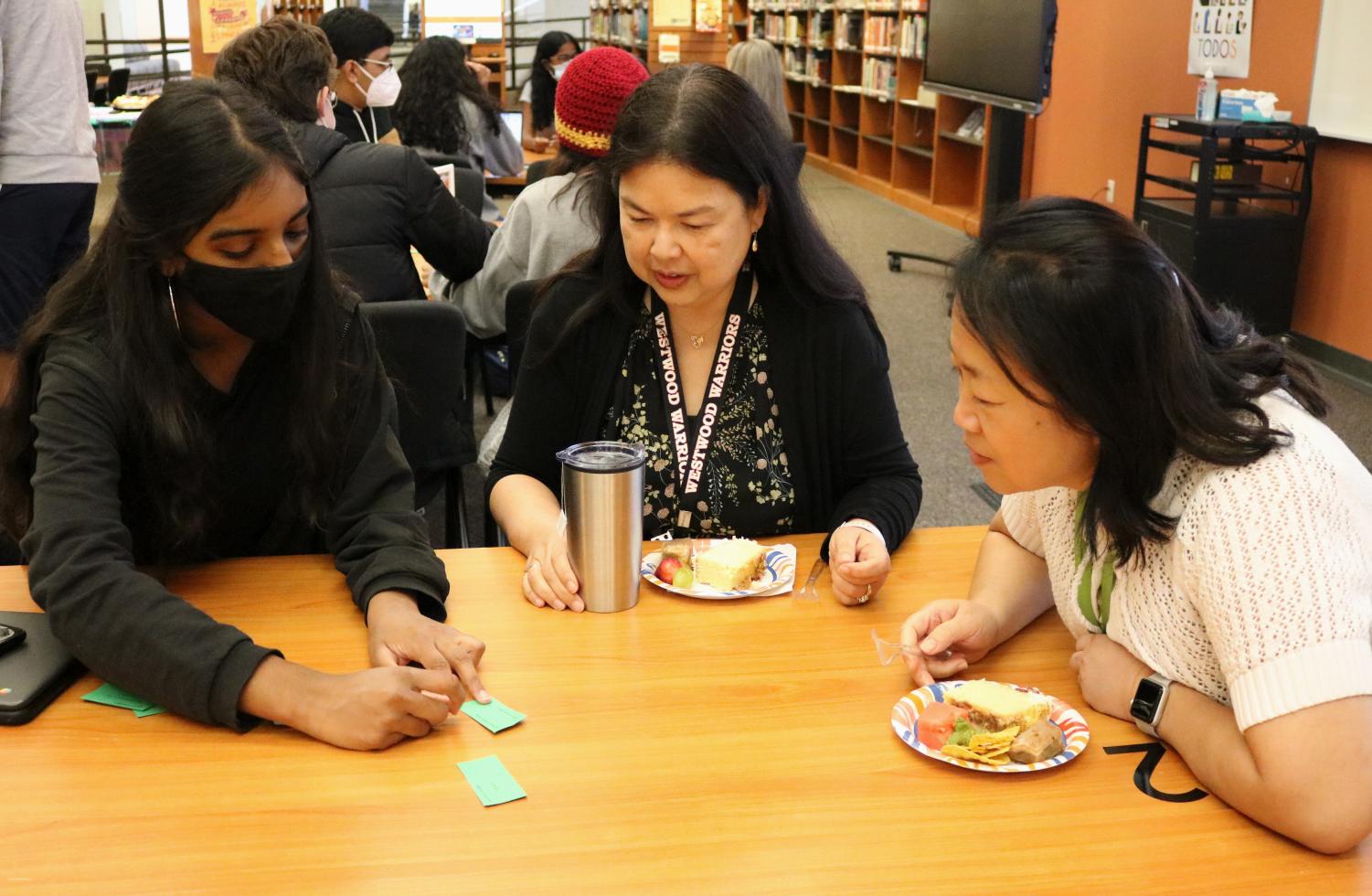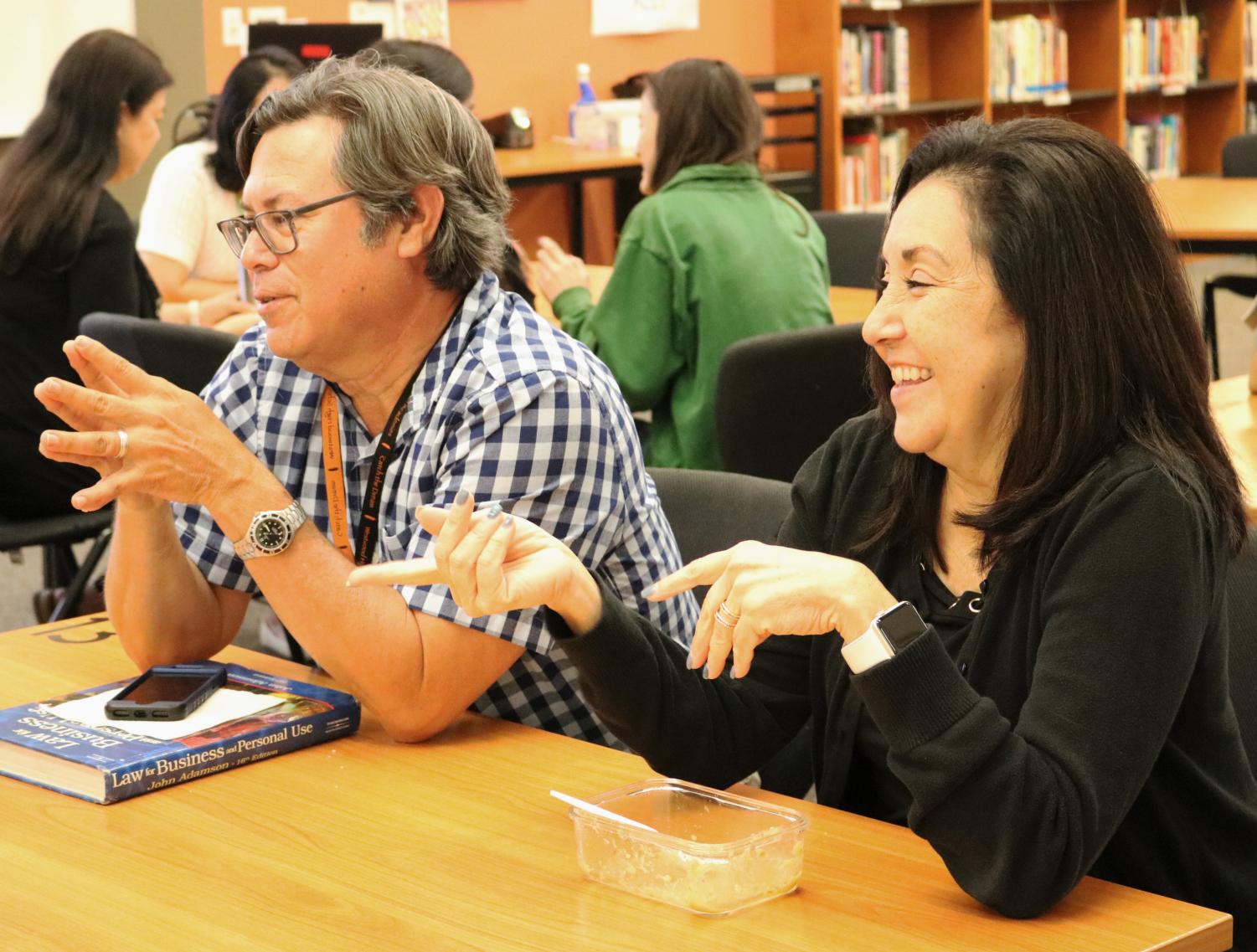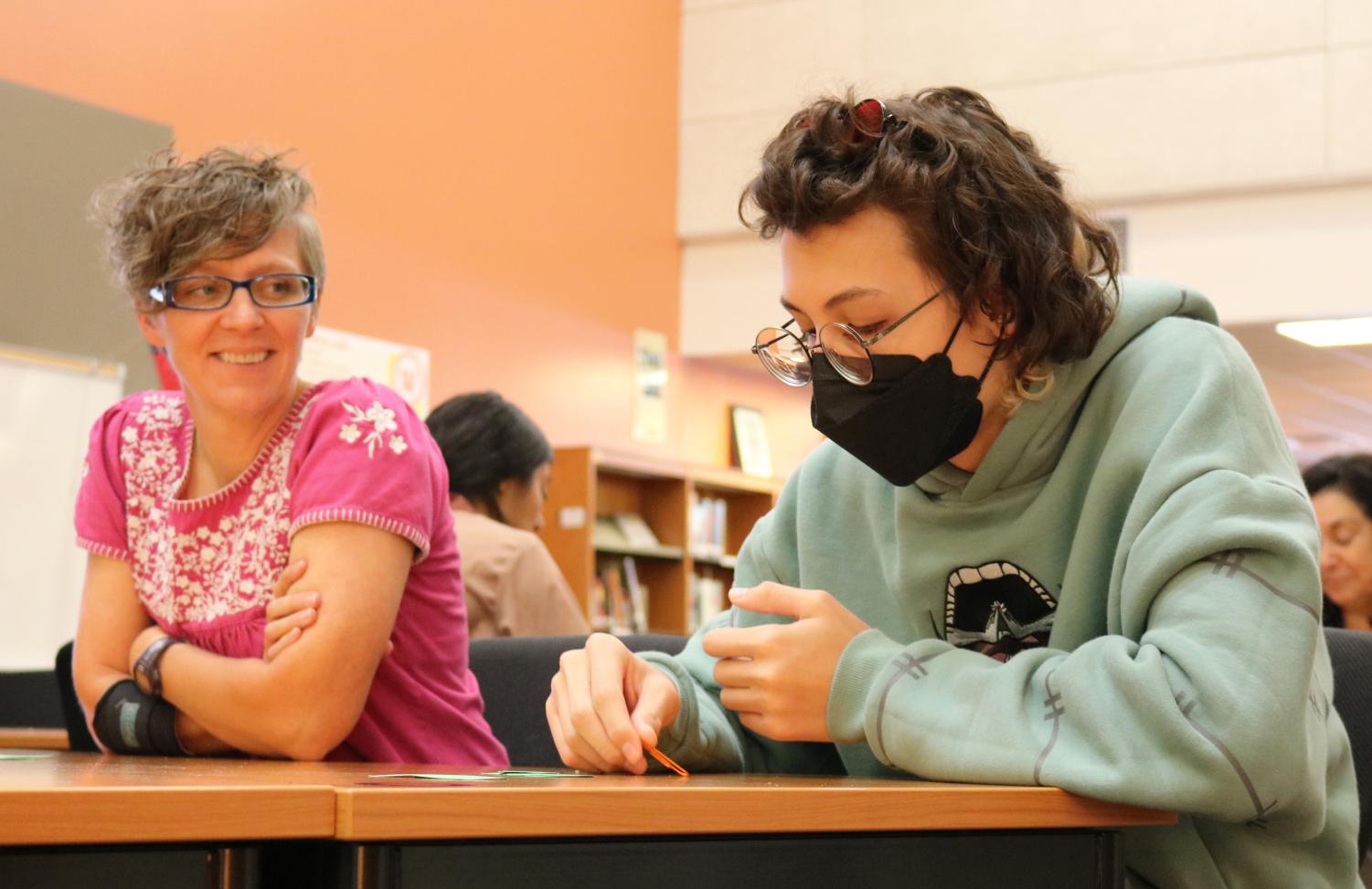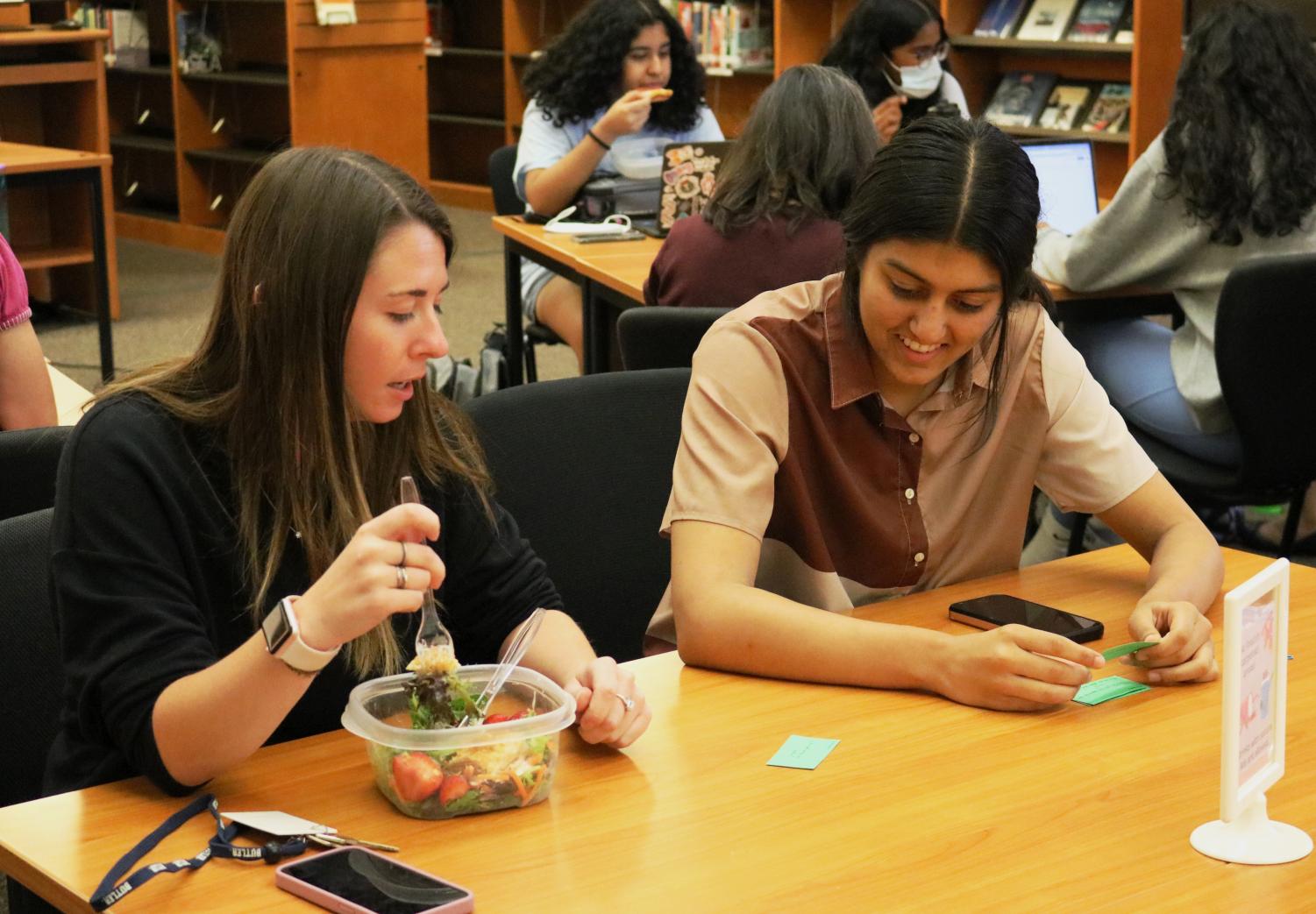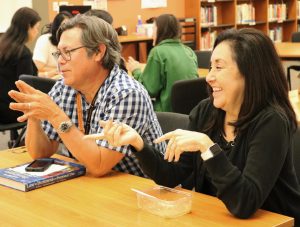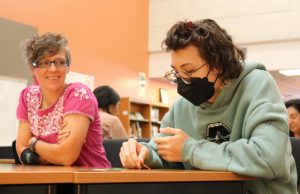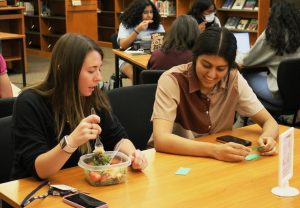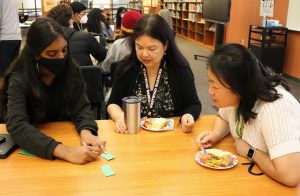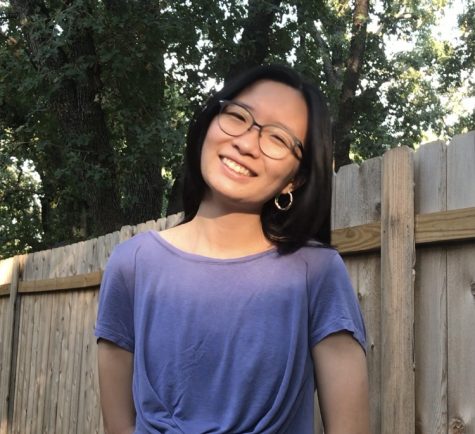Learning Reciprocated: Teachers Gather Spanish Basics at Spanish Honor Society Lunch
September 30, 2022
Listening intently to the intricacies of pronunciation, fragmented phrases quickly became structured sentences when teachers switched roles with students to learn Spanish language basics. Hosted by the Spanish Honor Society, (Sociedad Honoraria Hispánica, or SHH), club members were paired with various faculty during a teacher lunch event, held to celebrate “National Teach Spanish Week” on Tuesday, Sept. 27.
“We wanted teachers to become accustomed to a different language,” SHH Vice President Sanam Talreja ‘24 said. “It’s really beautiful because teachers learn some words they can use in the classroom and can connect with kids who don’t speak English, because there are quite a few at Westwood.”
Beginning with small flashcards that contained common Spanish expressions, the students, many of whom extended a personal invitation to teachers, went beyond the given prompts to provide meaning for each word. The informality of lunchtime facilitated natural conversation, contributing to an encouraging learning space. In addition, a variety of Latin American foods, such as flan, were served to further expose attendees to physically significant components of Hispanic culture.
“One of my friends invited me along, and I got to teach and talk to a teacher who I hadn’t seen in a while. [The environment] was a lot more relaxed, and less stressful,” Aneesh Vanguri ‘23 said.
Seeking to create a more pronounced community within organization membership, events such as this one align with broader aims of connecting students to collaborative and interaction-based activities, spurring interest in sharing linguistic skills. Such opportunities to contextualize language are exercises in immersion. French teacher Madame Kelly Harwick, who participated in the event, expanded on the value of improving a foundational understanding built during class and strengthened with practice in a variety of situations.
“I have always wanted to learn [Spanish] but never taken the time to,” Madame Harwick said. “[In this setting], I think it helps the students too, because when you actually teach something, you learn yourself. When I’m teaching French, I can practice my proficiency at the same time.”
Socials planned to facilitate greater accessibility in applying Spanish are dispersed throughout the year. SHH plans to serve popsicles at their “Paletas Social” set for Friday, Sept. 30, alongside a presentation from the non-profit Amigos de las Américas.

